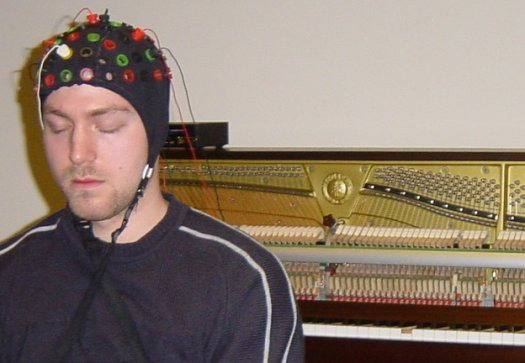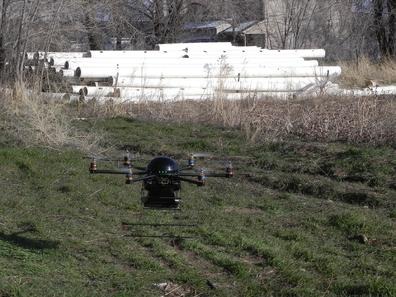SlashGear Science Week In Review
Welcome to the first SlashGear Science Week In Review. Each Saturday, we will round up our favorite science stories of the week for your perusal. Some are stories that we covered, others we didn't get to. A sample of this week's stories: A new form of matter, a hexacopter with superpowers, a robotic cloud, a supercool brown dwarf star, playing music using only your mind, and our ancestors on Mars. Think we missed something? Let us know in the comments!
Did Life on Earth Originate on Mars?
Researchers at MIT and Harvard are working on a device that would help us determine whether life on Earth originated on Mars, or vice versa. The SETG (Search for Extra-Terrestrial Genomes) device is designed to take a sample of Martian soil and process it to find any living or dead organisms, at least within the last 10 million years.

The SETG prototype includes a 1 inch by 1 inch chip with fluidic circuitry and tiny channels that feed in soil samples. The samples are analyzed by using blue light to excite flourescent dyes which help identify DNA within 3072 cubic chambers. Each chamber is about the width of a human hair.
The chances of finding any intact DNA on the surface of the red planet are slim due to the ultraviolet radiation bombarding the surface, so scientists hope to drill down as deep as possible for soil samples.
The instrument is not yet ready to be launched, but scientists hope to have it up and running in about two years. Before being used in space, it would be tested in Antarctica or Chile's Atacama Desert.
When it actually gets to Mars, all analysis will be done on the planet. You never know, your great, great, great...grandcestor might have been a Martian.
[via Space.com]
A New Phase of Matter?
Strange behavior in warm superconductors has puzzled scientists for over 20 years, and now researchers at the Stanford Institute for Materials and Energy Science (SIMES), which is a joint institute of the Department of Energy's SLAC National Accelerator Laboratory and Stanford University, are looking for answers.

Superconductors are materials that conduct electricity with 100 percent efficiency, losing nothing to resistance. But there is an "energy gap", or "pseudogap" that appears when the material enters its superconducting phase.
Electrons pair off at a lower energy to begin superconducting electric current. But now, the scientists have discovered that in one type of copper-based warm superconductor, the electrons are not actually pairing up, they are reorganizing into a distinct order. This new formation remains even after the material begins superconducting. And the new formation may exhibit a new phase of matter, which is not solid, liquid, gas or plasma. In the photo below, the circular formations at the bottom are electrons pairing off, and the orange plumes are the new order forming.

The press release from SLAC is located here.
[via PopSci]
Robotic Cloud Could Cool Qatar's World Cup Stadium
One of the concerns (aside from terrorism and the treatment of women) about having the 2022 World Cup in Qatar is the blistering 120 degree F heat. Saud Abdul Ghani, the head of the mechanical and industrial engineering department at Qatar University has a possible solution. He has proposed a remote controlled robotic cloud-like structure that would hover over the stadium, shielding it from direct sunlight. The cloud, made of a lightweight carbon structure, would be injected with helium to make it float, and it would be kept in the air by four solar-powered engines. It would be programmed to follow the path of the sun, blocking the sunlight from the stadium as the day progresses. A video showing the cloud in action is here.
[via Discovery Tech]
Play Music Using Only Your Mind
Eduardo Miranda, composer and computer-music teacher, has created a system where someone can play music with their mind. The brain-computer interface tracks and picks up neural impulses from your brain and translates them into musical notes.

To make the system work, the uses wears an EEG skull cap and concentrates on four "buttons" on a screen. When the user is focusing on the button, their brain fires off a unique series of impulses specific to each button. The impulses are captured by the skull cap, and then a series of notes are played. The device has to be calibrated for each user, which takes about two hours right now, but Miranda hopes to streamline the system so it can be dialed in more quickly.
[via Rue Liu on SlashGear]
The Supermoon, Did You See It?
A week ago today, March 19th, the moon was at the perigee of its elliptical orbit, meaning it was at the point in its orbit where it is closest to the earth. This time was extra special, since the moon was both at its perigee and it was full. This occurence only happens about once every twenty years. This time, it had been a little less than that, since the last occurence was 18 years ago, in March of 1993. The visual size of the moon was 14% larger, and our own Kevin Fubar was howling extra loud. How about you? Were you howling, or did you miss the sight? I'm ashamed to say I missed it, but my excuse is that it was cloudy that night (I think...). Check out the original post for a great video explaining the Supermoon in more detail.
[via Kevin Fubar, SlashGear]
Hexacopter Senses Motion and Breathing Through Concrete
TiaLinx has unveiled its Phoenix 40-A unmanned hexacopter (helicopter with six blades) which can sense breathing and motion in buildings on the ground. This is the newest addition to the line of life-sensing bots that includes the Cougar20-H, a rolling ground-based robot that can detect breathing through a concrete wall.

The copter is able to travel long distances and record video in both day and night vision formats. It uses a narrow beam of multi-gigahertz radio frequencies to penetrate reinforced concrete and detect breathing and movement inside a building. It can land on top of a building and perform a scan for human presence, or it can scan while flying.
The copter can also generate the layout of a multi-story building and send that information back to troops or law enforcement so that they have an idea of what they are walking into before entering a building. It has many applications: military surveilance, search and rescue, even locating landmines.
[via SlashGear]




